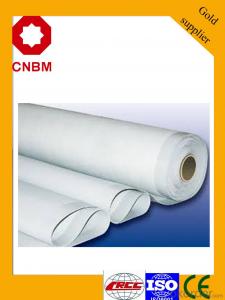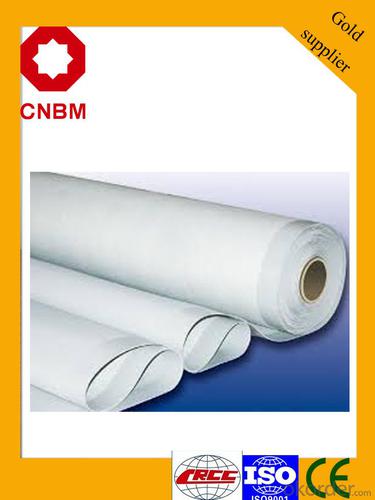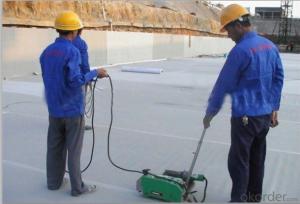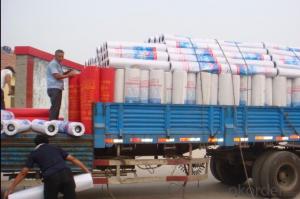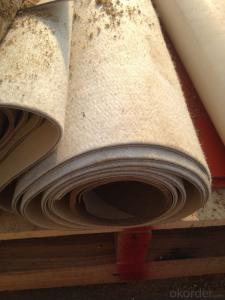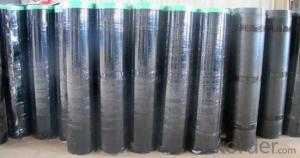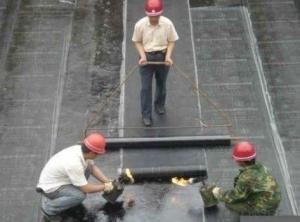SBS/APP Modified Bitumen Waterproof Membrane- Hot Sell In South East Asia
- Loading Port:
- Shanghai
- Payment Terms:
- TT OR LC
- Min Order Qty:
- 44 roll
- Supply Capability:
- 100000 roll/month
OKorder Service Pledge
OKorder Financial Service
You Might Also Like
Product description
SBS modified bitumen waterproof membranes use high quality needle punched polyester mat or fiberglass compound mat as the base reinforcement. And use SBS modified bitumen as the dip-coat material. The SBS modified bitumen waterproof membrane are widely used for roof waterproof projects.
Main performance
1.Good low temperature performance, especially suitable for cold regions.
2.Good weather resistance, tensile property, extensibility, corrosion resistance and so on.
3.Strong adaptability for substrate shrinkage, deformation and cracks.
4.Convenient to apply: use heat fusion method in all seasons.
5. Meet national standards.
6.ISO Certification.
Technical Parameters
No. |
Item | Index | |||||||||
Ⅰ | Ⅱ | ||||||||||
PY | G | PY | G | PYG | |||||||
1 |
soluble content(g/m2) ≥ | 3mm | 2100 | — | |||||||
4mm | 2900 | — | |||||||||
5mm | 3500 | ||||||||||
test phenomenon | — | non-ignitable | — | non-ignitable | — | ||||||
2 |
heat resistance | °C | 90 | 105 | |||||||
≤mm | 2 | ||||||||||
test phenomenon | no flow or drippage | ||||||||||
3
|
low temperature flexibility °C | -20 | -25 | ||||||||
no flaw | |||||||||||
4
|
water tightness 30min
|
0.3Mpa |
0.2Mpa |
0.3Mpa
| |||||||
5 |
tension | tension of maximum peak rate%≥ | 500 | 350 | 800 | 500 | 900 | ||||
tension of maximum peak rate%≥ | — | — | — | — | — | ||||||
test phenomenon | no cracks or separate | ||||||||||
6 |
elongation
| elongation of maximum peak rate%≥ |
30 |
— |
40 |
— | |||||
elongation of second peak rate%≥peak rate%≥ |
— |
— |
15 | ||||||||
Product usage
The waterproof , dampproof and seepage-proofing of roof, basement, tunnel and so on.
Packaging and storage
1)Avoid insolating, raining; the temperature shall be 4-45°C;
2)Keep them stand up and vertical;
3)Do not stack up over two tiers, avoid tilting and lateral drift.
product show
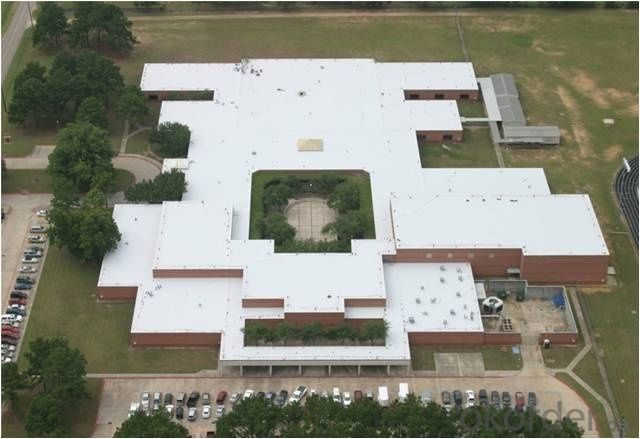
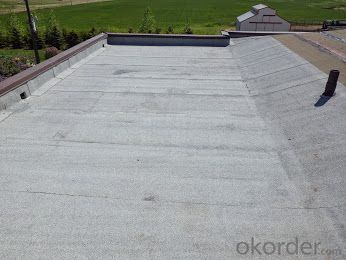
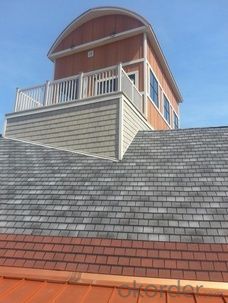
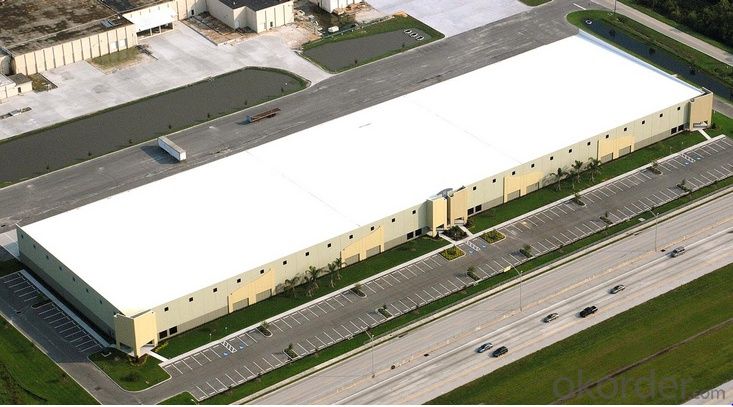
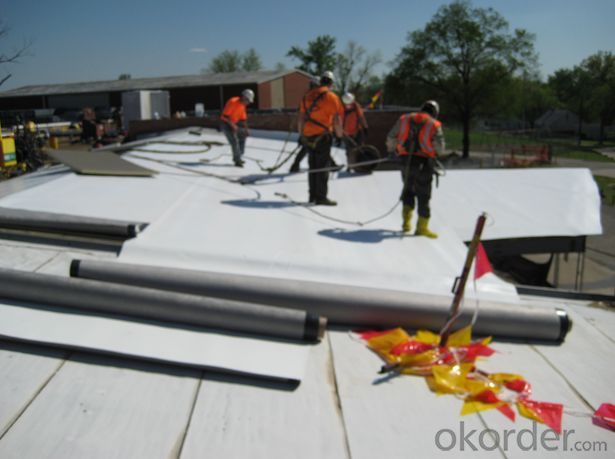
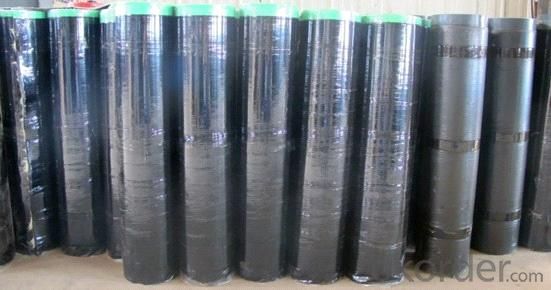
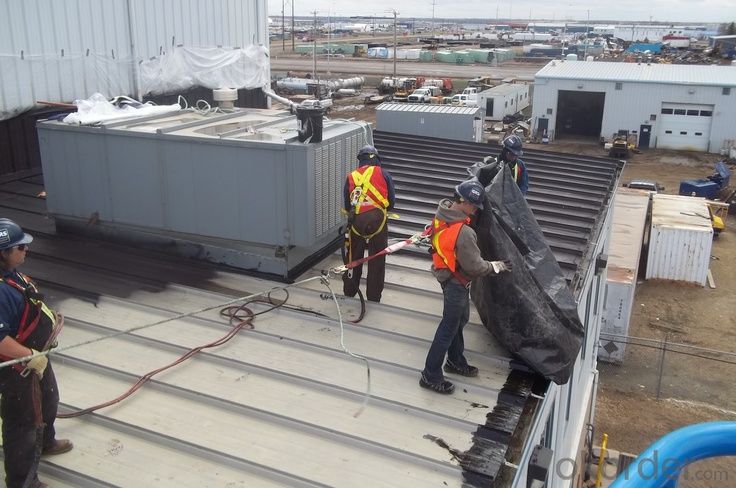
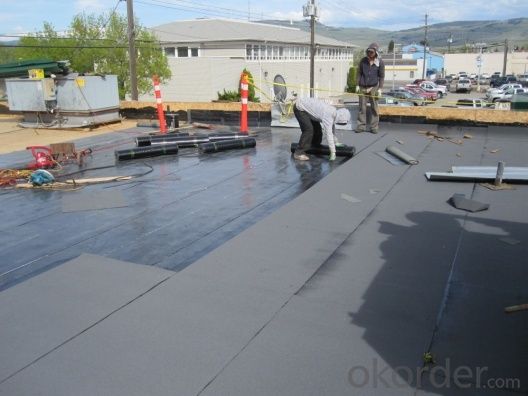
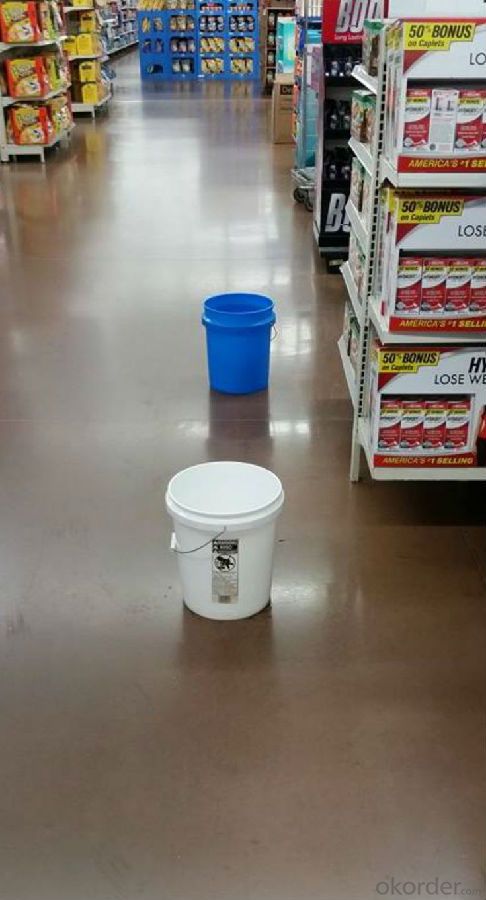
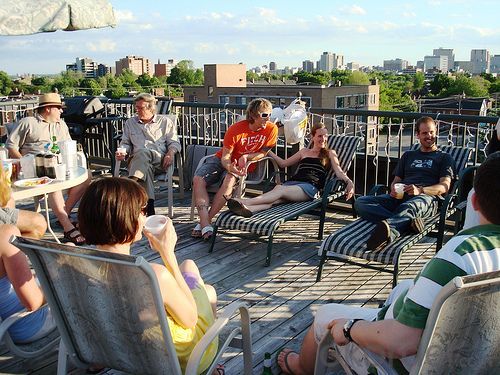
FAQ
Q: What's the delivery time ?
A: 3-5 days for 1-600 rolls, 10-15 days for container.
Q: What's the payment terms ?
A: TT/LC
Q: How do you make replacement with quality problems ?
A: New replacement will be packed into your next order or send to you directly after receive video or photo about quality problems.
- Q: Can a waterproofing membrane be used in conjunction with paint or coatings?
- Yes, a waterproofing membrane can be used in conjunction with paint or coatings. In fact, combining a waterproofing membrane with paint or coatings is a common practice in many construction and renovation projects. The waterproofing membrane provides a barrier against moisture and prevents water infiltration, while the paint or coatings add aesthetic appeal and can provide additional protection against UV rays, weathering, and chemical exposure. By using both in conjunction, you can achieve a dual-layer protection system that ensures long-lasting durability and water resistance. However, it is essential to ensure compatibility between the waterproofing membrane and the paint or coatings to avoid any adverse reactions or loss of effectiveness. Consult with a professional or manufacturer guidelines to determine the best combination and application process for your specific project.
- Q: Can a waterproofing membrane be used in areas with high foot traffic or heavy loads?
- A waterproofing membrane is viable for use in areas subjected to heavy foot traffic or substantial loads. These membranes are created to serve as a protective barrier against water infiltration and can withstand different forms of stress, including foot traffic and heavy loads. However, it is imperative to select a waterproofing membrane that is explicitly designed for such circumstances. Multiple membrane options are available, each possessing varying levels of durability and strength. It is of utmost importance to seek guidance from a professional waterproofing expert or manufacturer to ensure that the chosen membrane is suitable for the specific requirements of the high foot traffic or heavy load area. Proper installation and maintenance of the membrane are also crucial for its long-term effectiveness in these conditions.
- Q: Can a waterproofing membrane be used on brass surfaces?
- To safeguard surfaces from water infiltration and harm, one usually employs a waterproofing membrane. Despite brass surfaces not being particularly susceptible to water damage, an additional safeguarding layer can still be applied in the form of a waterproofing membrane. This can aid in the prevention of moisture accumulation on the brass surface, ultimately averting tarnishing or corrosion. Nonetheless, it is crucial to acknowledge that brass surfaces are often sought after for their innate patina and aesthetic allure. The application of a waterproofing membrane may alter the brass's appearance, potentially resulting in a glossy or artificial finish. Thus, it is prudent to thoroughly ponder the desired outcome prior to opting for the utilization of a waterproofing membrane on brass surfaces.
- Q: Can a waterproofing membrane be used for roofs with foot traffic?
- Yes, a waterproofing membrane can be used for roofs with foot traffic. However, it is important to choose a membrane that is specifically designed and rated for foot traffic to ensure durability and safety.
- Q: Can a waterproofing membrane be used in kitchens?
- Certainly! Kitchens can indeed benefit from the application of a waterproofing membrane. It is strongly advised to employ such membranes in spaces that are susceptible to moisture and water, like kitchens. These specialized membranes are engineered to establish a shield against water, thwarting its infiltration into the foundation and safeguarding it against harm. They are frequently utilized on floors, walls, and even countertops to ensure a tight seal that resists water damage, the growth of mold, and various other complications. Moreover, waterproofing membranes can aid in soundproofing while enhancing the sturdiness and lifespan of kitchen surfaces.
- Q: Can a waterproofing membrane be used in conjunction with solar panel installations?
- Yes, a waterproofing membrane can be used in conjunction with solar panel installations. Waterproofing membranes are commonly used to protect roofs and other surfaces from water damage, and they can provide an additional layer of protection for solar panels. This can help to prevent water infiltration and potential damage to the solar panels and their electrical components. Additionally, waterproofing membranes can also help to extend the lifespan of the solar panel system by providing an extra barrier against moisture and other environmental factors.
- Q: Can a waterproofing membrane be used on cinder block surfaces?
- Yes, a waterproofing membrane can be used on cinder block surfaces. Cinder blocks are porous materials that can absorb water, so applying a waterproofing membrane can help prevent moisture from penetrating the surface and causing damage. The membrane acts as a barrier, preventing water from infiltrating the cinder blocks and protecting them from moisture-related issues such as mold, mildew, and deterioration. It is important to properly prepare the cinder block surface before applying the membrane to ensure proper adhesion and effectiveness. Additionally, choosing a waterproofing membrane specifically designed for cinder block surfaces will provide the best results.
- Q: Can a waterproofing membrane be installed by a homeowner or is professional installation required?
- Professional installation is typically recommended for waterproofing membrane installation. This is because it involves complex techniques and specialized equipment that homeowners may not have. Additionally, professionals are trained to assess and address specific waterproofing needs, ensuring a more reliable and effective installation.
- Q: Can a waterproofing membrane be applied to existing structures or only during construction?
- Yes, a waterproofing membrane can be applied to existing structures as well as during construction. The application of a waterproofing membrane is not limited to new constructions. In fact, retrofitting existing structures with a waterproofing membrane is a common practice to prevent water infiltration and protect the building from moisture-related damages. This can be done by preparing the surface, cleaning and repairing any existing damage or cracks, and then applying the waterproofing membrane according to the manufacturer's instructions. It is important to note that the suitability and compatibility of the waterproofing membrane with the existing structure should be assessed by a professional to ensure its effectiveness and longevity.
- Q: Is a waterproofing membrane resistant to saltwater or salt damage?
- Typically, a waterproofing membrane resists saltwater or salt damage. Its purpose is to create a barrier against water and moisture, making it suitable for use in marine environments or coastal areas. These membranes are made from materials that can withstand the corrosive effects of saltwater or salt. To ensure their resistance to saltwater or salt damage, proper preparation and sealing techniques are employed during installation. However, it is important to note that the level of resistance may vary depending on the type and quality of the membrane. Therefore, it is advisable to consult with a professional or the manufacturer to choose the appropriate membrane for the specific application and environment.
Send your message to us
SBS/APP Modified Bitumen Waterproof Membrane- Hot Sell In South East Asia
- Loading Port:
- Shanghai
- Payment Terms:
- TT OR LC
- Min Order Qty:
- 44 roll
- Supply Capability:
- 100000 roll/month
OKorder Service Pledge
OKorder Financial Service
Similar products
Hot products
Hot Searches
Related keywords
